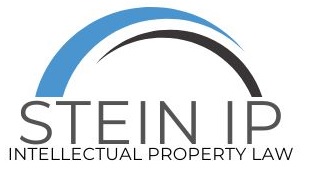- HOME
- > Blog Main Page
- > U.S. Supreme Court Rules on Inter Partes Review Time-Bar Decisions
U.S. Supreme Court Rules on Inter Partes Review Time-Bar Decisions
By David Ward
The United States Supreme Court has been using its latest term to resolve a couple issues of statutory interpretation related to intellectual property.[1] The latest of these decisions, Thryv, Inc v. Click-To-Call Technologies, LP, sought to determine whether the Patent Trial and Appeals Board’s (PTAB) time-bar determination of inter partes review is judicially reviewable.[2] The court answered no, that it is not appealable as an agency decision under 35 U.S.C. § 314(d).[3]
Background
An inter partes review (IPR) is a petition by a person who is not the owner of a patent seeking to cancel as unpatentable 1 or more claims of another’s patent.[4] In the case at hand, petitioner Thryv sought an IPR for respondent Click-to-Call’s patent for an anonymous telephone call system. Thryv had previously filed suit in 2001 for patent infringement, which ended in voluntary dismissal without prejudice.[5] Click-to-Call’s main argument was that 35 U.S.C. § 315(b) does not allow an IPR to be instituted if the petition requesting it is filed more than 1 year after the service of a complaint alleging infringement of the patent.[6] The PTAB disagreed, concluding that because the 2001 petition was dismissed without prejudice, it did not trigger § 315(b), and invalidated thirteen of the respondent’s patent claims.
Click-to-Call then appealed, challenging the Board’s ruling on § 315(b). Thryv leaned on 35 U.S.C. § 314(d), which states that determinations of whether to institute an IPR under that section are final and non-appealable. The Federal Circuit Court of Appeals dismissed Click-to-Call’s challenge for lack of jurisdiction.[7] In 2016, the Supreme Court vacated and remanded the Federal Circuit’s decision in light of Cuozzo Speed Technologies, LLC v. Lee, which expanded the Court’s view of § 314(d) to barring IPR appeals on other grounds.[8] Upon rehearing, the Federal Circuit Court of Appeals vacated the Board’s ruling, citing their new decision in Wi-Fi One, LLC v. Broadcom Corporation that held that time-bar determinations under § 315(b) are appealable.[9] The case then made its way back to the Supreme Court to resolve the issue of reviewability of time-bar determinations under § 315(b).
Analysis
Justice Ginsburg, writing for the majority, leans heavily on the rule the Supreme Court settled on in Cuozzo: “that § 314(d) bars review at least of matters ‘closely tied to the application and interpretation of statutes related to’ the institution decision.”[10] The Court found that a § 315(b) challenge fell within that scope. In the majority’s opinion, the intent of Congress in passing this legislation was to weed out bad patent claims and that allowing § 315(b) appeals would go directly against that intent.[11] While there is usually a presumption favoring judicial review, both this case and Cuozzo overcome that presumption because allowing appeals would go against the statutory purpose of minimizing overlap between IPRs and patent-infringement litigation.[12] Even though the language of § 314(d) bars appeals only “under [that] section,” the Court found that every decision made “under” that section also relies on other provisions, such as § 315(b).[13] Therefore, allowing judicial review of time-bar determinations under § 315(b) was not the intent of Congress in passing this legislation. The judgment of the Federal Circuit Court of Appeals that reversed the Board’s ruling was then vacated and remanded with instructions to dismiss for lack of appellate jurisdiction.[14]
What does this mean?
Thryv is another in a recent list of Supreme Court cases giving more discretion to the executive branch and Patent Office’s administrative process.[15] The Court’s aim to reduce waste of judicial and other government resources in patent appeals is very apparent in this case. If it wasn’t apparent before, this ruling hammers down the adage of “getting it right the first time” for anyone in PTAB proceedings, as the list of appealable rulings is now one shorter.
[1] See also Romag Fasteners, Inc. v. Fossil, Inc 140 S. Ct. 1492 (2020).
[2] Thryv, Inc v. Click-To-Call Techs., LP, 140 S. Ct. 1367, 1370 (2020).
[3] Id.
[4] 35 U.S.C. § 311(a)-(b).
[5] Thryv, Inc 140 S. Ct. at 1371; See Inforocket.Com, Inc. v. Keen, Inc., No. 1:01–cv–05130 (SDNY).
[6] 35 U.S.C. § 315(b); Thryv, Inc 140 S. Ct. at 1371-72.
[7] Click-to-Call Techs., LP v. Oracle Corp., 622 F. App'x 907 (Fed. Cir. 2015), cert. granted, judgment vacated, 136 S. Ct. 2508 (2016).
[8] Click-To-Call Techs., LP v. Oracle Corp., 136 S. Ct. 2508 (2016); see Cuozzo Speed Techs., LLC v. Lee, 136 S. Ct. 2131, 2142 (2016).
[9] Click-To-Call Techs., LP v. Ingenio, Inc., YellowPages.com, LLC, 899 F.3d 1321, 1341 (Fed. Cir. 2018)
[10] Thryv, Inc, 140 S. Ct. at 1373 (citing Cuozzo Speed Techs., LLC v. Lee, 136 S. Ct. 2131, 2141 (2016)).
[11] Id. at 1375.
[12] Id. at 1374-76.
[13] See 35 U.S.C. §§ 314(d), 315(b).
[14] Thryv, Inc 140 S. Ct. at 1377.
[15] See generally Thryv, Inc 140 S. Ct. at 1367; Oil States Energy Servs., LLC v. Greene's Energy Grp., LLC, 138 S. Ct. 1365 (2018); Speed Techs., LLC v. Lee, 136 S. Ct. 2131 (2016)

TAGS:
RECENT POSTS
